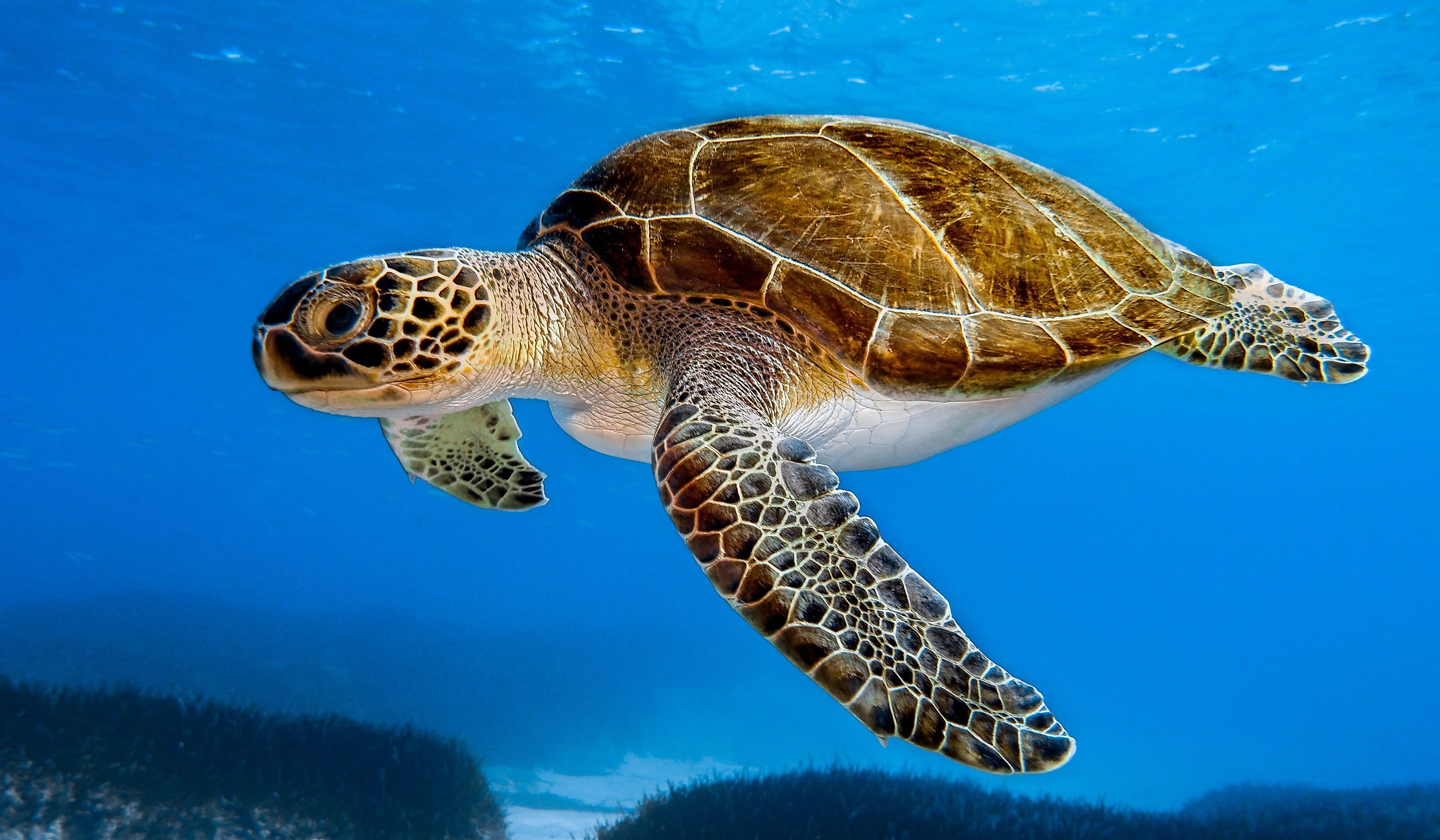
America's 10 Largest Living Reptiles
With its massively diverse biomes, the United States also has one of the most diverse arrays of animals in the world. Reptiles, which can be found in practically all corners of the nation, are among the creatures that live within its borders.
What is a reptile? To put it simply, a reptile is a cold-blooded vertebrate with scally skin and usually lays eggs on land...so the opposite of your household cat, in other words. From crocodiles to turtles and snakes, there are some impressively large species that can be found. Today, we will look at the 10 largest living reptiles (in terms of both body length and weight) that are living in America today!
Gopher Tortoise
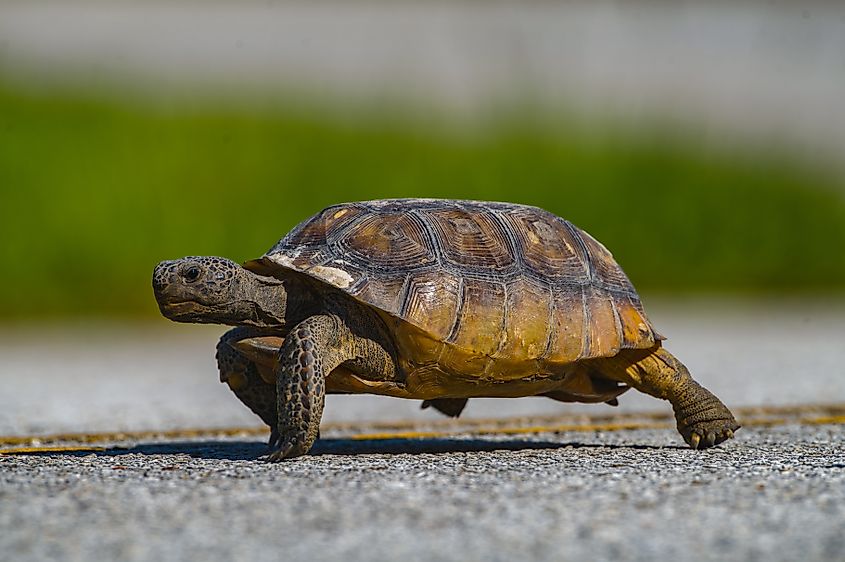
The Gopher Tortoise (Gopherus polyphemus) is a land-based tortoise that is native to the southeastern United States, particularly found in Florida, Georgia, and Alabama. Recognizable by its sturdy, elephant-like limbs and high-domed shell, this tortoise typically reaches about 1.5 feet in length. Weighing up to 15 pounds, it sports a grayish-brown to tan shell with a yellowish underside (plastron).
The Gopher Tortoise creates extensive underground tunnels that provide shelter for other species once it either leaves or dies, earning its status as a species in its ecosystem. These burrows often exceed 40 feet in length and 10 feet in depth! Primarily herbivorous, it's diet includes various low-growing plants, grasses, and fruits, playing another vital role in its ecosystem by dispersing seeds.
Alligator Snapping Turtle
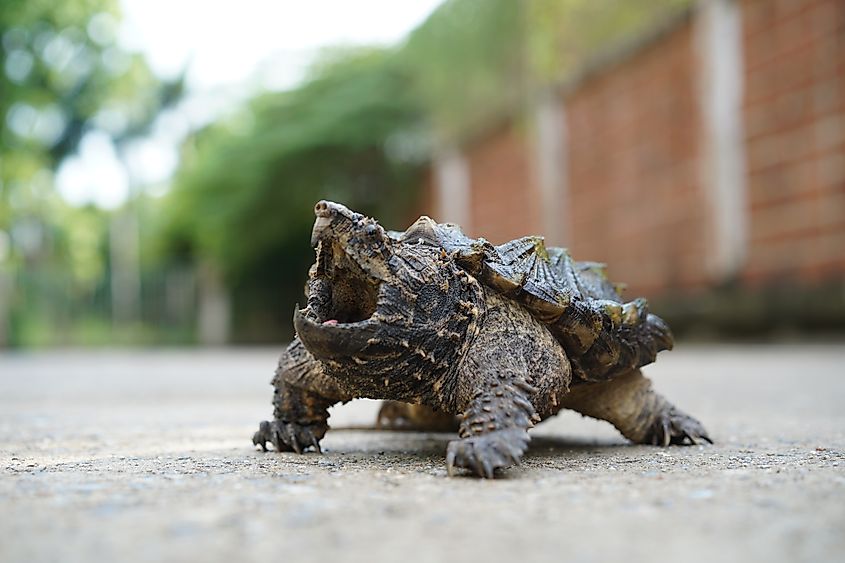
The Alligator Snapping Turtle (Macrochelys temminckii) is one of the largest freshwater turtles in the United States. It can grow up to 2.5 feet long and weigh as much as 175 pounds. Found mainly in rivers, lakes, and swamps of the southeastern U.S., this turtle is known for its powerful jaws and prehistoric appearance.
Its shell is rugged and spiked, resembling an alligator's back, which is how it got its name. The turtle has a unique way of hunting: it sits still on the riverbed with its mouth open, wiggling a worm-like lure on its tongue to attract fish. Once a fish comes close, the turtle snaps its jaws shut with incredible speed and force. This ambush predator primarily eats fish, but it also consumes other animals and plants found in its habitat. Although attacks on humans are rare, you should definitely watch your toes while swimming or walking in its habitat.
Loggerhead Sea Turtle
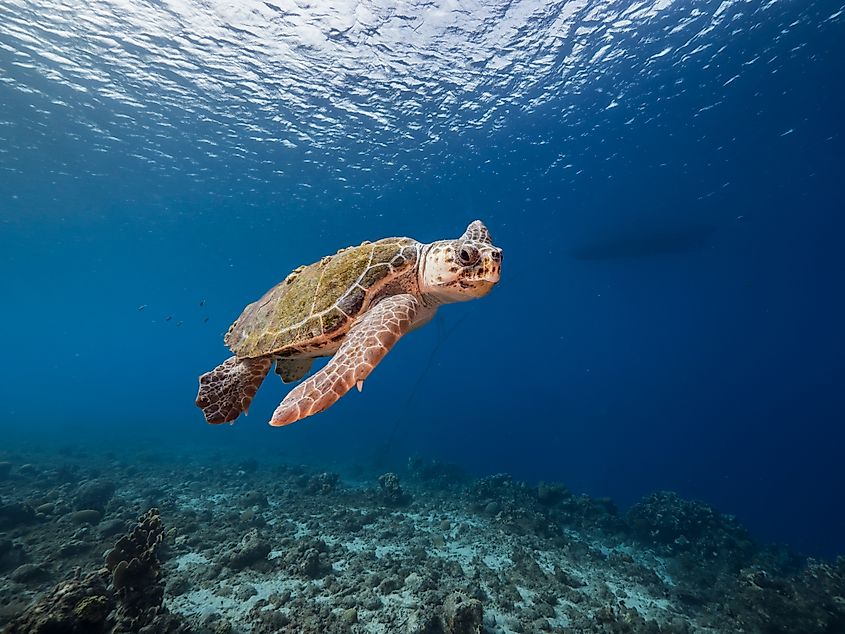
The Loggerhead Sea Turtle (Caretta caretta) is a marine reptile known for its large head and powerful jaws. Reaching lengths of up to 3.5 feet and weighing between 155 and 400 pounds, it is one of the largest sea turtle species in the entire world. They have heart-shaped, red, and brown shells and large, powerful flippers that allow them to navigate vast ocean distances.
Found in the Atlantic, Pacific, and Indian Oceans, the Loggerhead Sea Turtle often nests along the southeastern U.S. coastlines, most notably in Florida. These turtles are generally carnivorous, feeding on jellyfish, crustaceans, and mollusks, which they crush with their beaks. Loggerhead Sea Turtles are vital for marine ecosystems, particularly because they assist in maintaining the health of sea grass beds and coral reefs. Unfortunately, they face threats from habitat loss, pollution, and bycatch, making them a species of conservation concern.
Green Sea Turtle
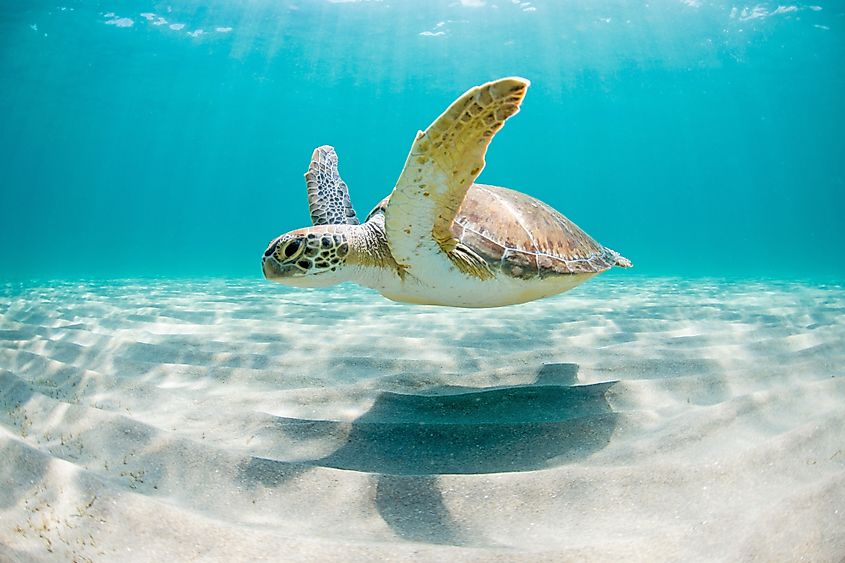
The Green Sea Turtle (Chelonia mydas) is another big marine turtle known for its smooth, heart-shaped shell. It can grow up to 5 feet in length, and these turtles weigh between 300 and 500 pounds. The turtle is named not for its shell color but for the uniquely greenish hue of its body fat.
This turtle inhabits tropical and subtropical seas around the world, including the coasts of Florida and Hawaii. Being herbivores, adult Green Sea Turtles graze on seagrass and algae. They are known for their long migrations between feeding grounds and nesting sites. Despite their importance, Green Sea Turtles are endangered as a result of threats like habitat loss, pollution, and poaching. Conservation efforts are needed to defend the existence of these magnificent creatures.
Leatherback Sea Turtle
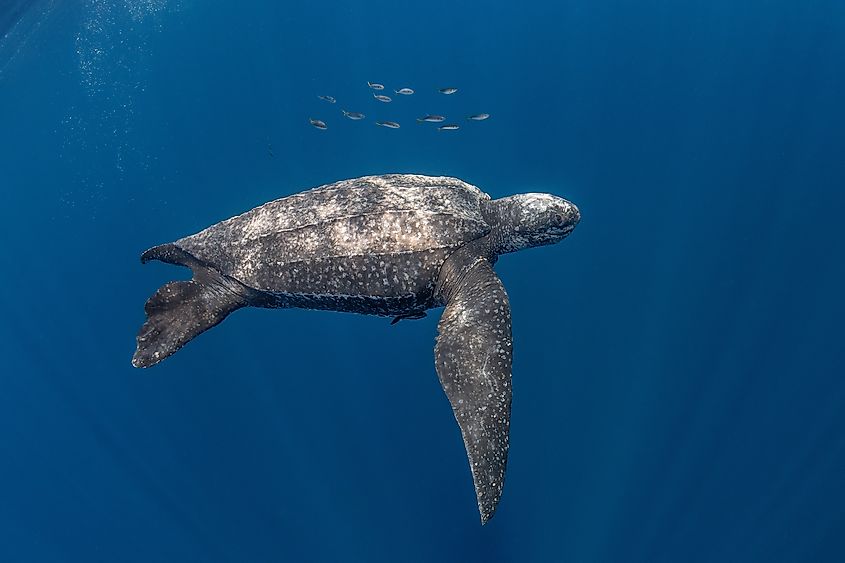
The Leatherback Sea Turtle (Dermochelys coriacea) is the largest of all sea turtles, reaching lengths of up to 8 feet and weighing between 600 and 2,000 pounds. Unlike other sea turtles, it has a distinctive, leathery shell instead of a hard one. This shell is black with white spots.
Leatherbacks are highly migratory and found in most oceans worldwide, including off the U.S. coasts. They dive deeper than any other turtle species, sometimes exceeding 4,000 feet, to feed mainly on jellyfish. In fact, this diet has been found to help control jellyfish populations. Leatherbacks face significant threats from habitat loss, plastic pollution, and accidental capture in fishing gear. Due to these dangers, they are listed as vulnerable.
Texas Indigo Snake
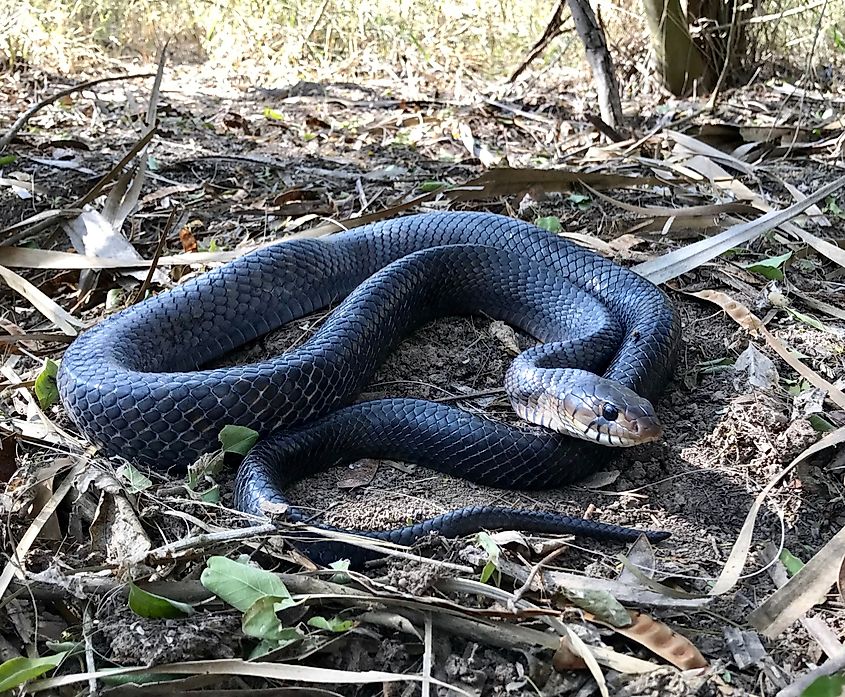
The Texas Indigo Snake (Drymarchon melanurus erebennus) is a large, non-venomous snake native to southern Texas and northern Mexico. It can grow up to 8 feet long, although some sightings claim sizes of 10 feet or more! This makes it one of the longest snakes in North America.
The Texas Indigo Snake has a glossy, blue-black coloration, giving it a striking look that is hard to miss. It prefers habitats like scrublands, open grasslands, and the edges of forests, which, as you can imagine, are abundant in Texas. This snake is an active hunter, feeding on various prey, including rodents, birds, frogs, and even other snakes, such as rattlesnakes. Despite its size and hunting prowess, the Texas Indigo Snake is harmless to humans and is even beneficial for controlling pest populations.
Although not currently a threatened species, the Texas Indigo Snake is highly sensitive to habitat destruction.
Bullsnake
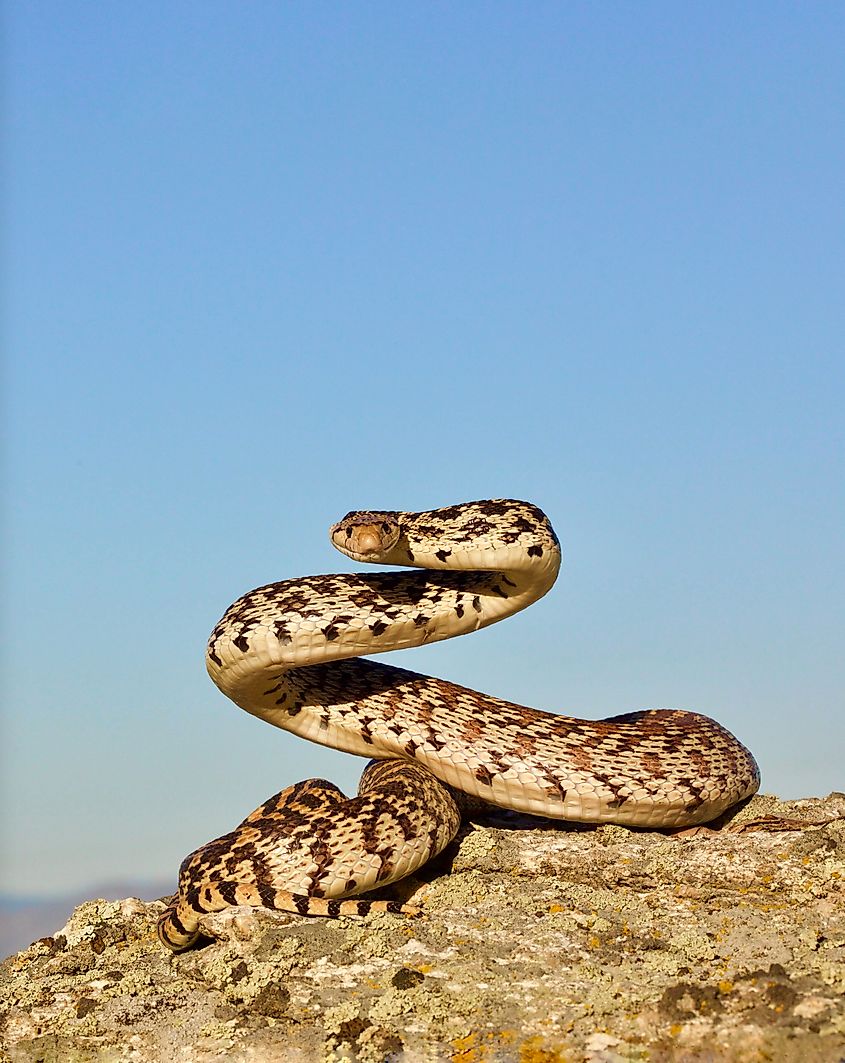
The Bullsnake (Pituophis catenifer sayi) is another one of the largest snakes in North America, reaching lengths of up to 8 feet and beyond. This non-venomous snake is commonly found in the central and western United States, inhabiting prairies, grasslands, and farmlands. It has a distinctive yellowish-brown body with dark blotches, which helps it blend into its often grassy surroundings.
Bullsnakes are powerful constrictors, meaning that instead of biting and/or poisoning their prey, they wrap around and constrict live prey until they suffocate. Birds, eggs, and other small animals are usually what's on the menus for Bullsnakes.
Despite their size and ability to mimic rattlesnakes by hissing and shaking their tails, Bullsnakes are generally harmless to humans as they are not quite large enough to be able to eat us! They are also known for their burrowing habits, often taking over abandoned burrows of other animals.
Eastern Indigo Snake
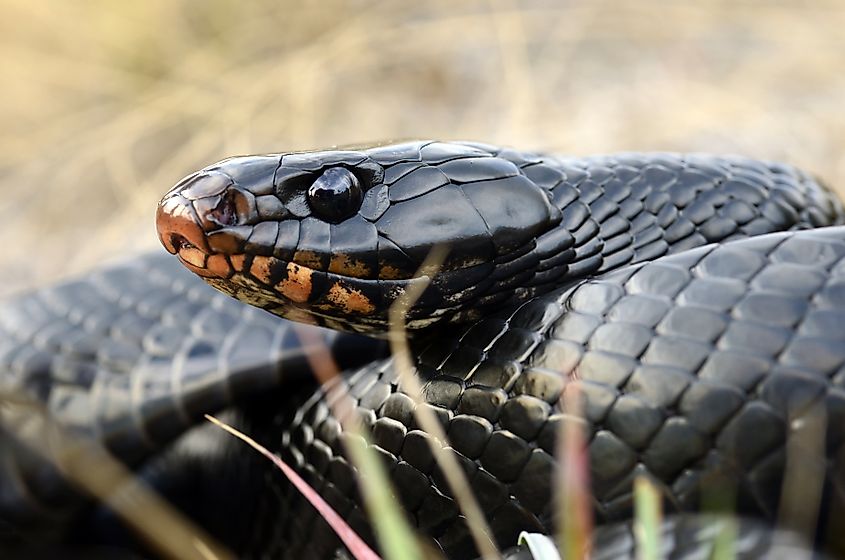
The Eastern Indigo Snake (Drymarchon couperi) is the longest native snake in the United States, officially noted as being up to 8.5 feet in length, with many growing even longer. It is non-venomous and notable for its shiny blue and black scales.
This snake is primarily found in the southeastern U.S., particularly the areas in and around Florida and Georgia. Eastern Indigo Snakes prefer habitats such as pine flatwoods, hammocks, and sandhill regions. They are known for their impressive appetite, eating a wide range of animals, including small mammals, birds, frogs, rattlesnakes (rattlesnakes just do not get along with others, it seems), and even small alligators!
The Eastern Indigo Snake is a protected species due to habitat loss and fragmentation, mainly from the expansion of towns and cities.
American Alligator
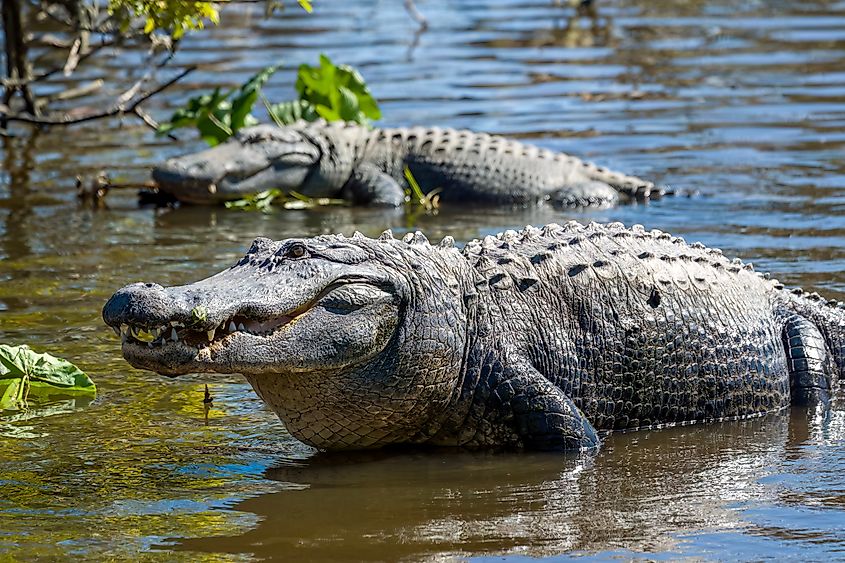
The American Alligator (Alligator mississippiensis), like with many other entries on this list, is native to the southeastern United States, mainly in states like Florida, Louisiana, and parts of Texas. It is one of the largest reptiles in North America, with males reaching lengths of up to an astounding 19 feet and weighing over 1,000 pounds, while females are typically smaller.
Alligators have a broad, rounded snout and dark, armored bodies covered in thick scales. They inhabit various freshwater habitats such as swamps, marshes, and rivers. As top predators, they are crucial in balancing both prey and predator (smaller predators) populations.
Although they have a scary reputation, American Alligators are generally shy of humans and only become aggressive if provoked or threatened. Conservation efforts have helped increase their populations after being previously seriously endangered. Despite their comeback, ongoing conservation of this species is still important to maintain this species and the ecosystem they live in as a whole.
American Crocodile
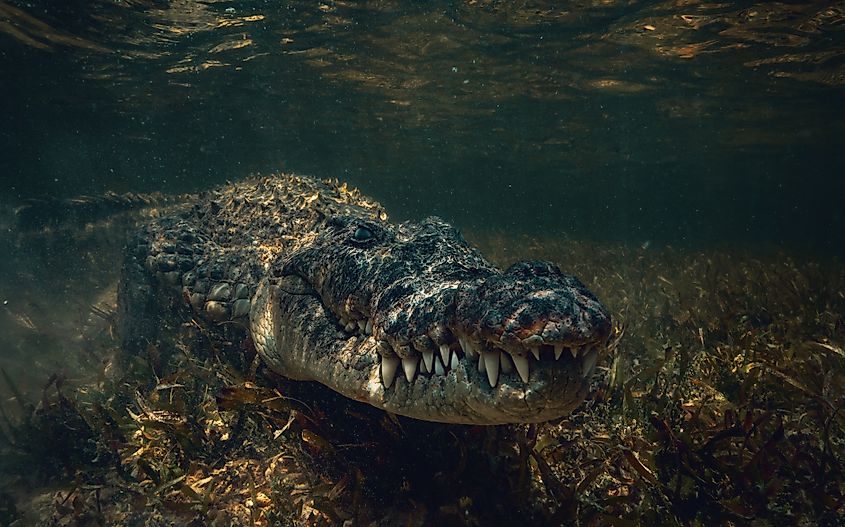
The largest reptile in America, the American Crocodile (Crocodylus acutus), lives in the coastal areas of South Florida (in both the Atlantic side to the east and the Gulf of Mexico to the West), Central America, and parts of South America. It is one of the largest crocodile species in the world, with adults being seen to reach lengths of up to 20 feet and weighing over 2,000 pounds.
Unlike alligators, American crocodiles have long, tapered snouts and grayish-green scales, blending in with their mangrove and coastal habitats. Also, unlike their more aggressive alligator counterparts, crocodile attacks on humans are even less common. They are still apex predators, feeding on fish, birds, mammals, and sometimes smaller reptiles.
Because of habitat loss, pollution, and hunting, American crocodiles are listed as a threatened species. Conservation efforts are currently underway to bring back the normal population of these giants.
Discover All of America's Reptiles
America is a wonderland for wildlife enthusiasts. Although the bulk of the behemoth reptiles mentioned on this list are concentrated in the temperate and tropical wetlands and coasts of the southeast, other interesting and notable species can be found dotted throughout the country, like skinks to the northeast, frogs in the rainforests of the Pacific Northwest, geckos and lizards in the deserts to the west, and much more in other regions.











